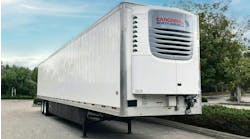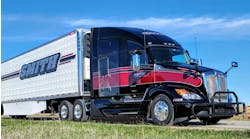Renewable Dairy Fuels (RDF), a business unit of Amp Americas, announced that its second biogas facility producing Renewable Natural Gas (RNG) from dairy waste is now operational and has begun delivering RNG into the NIPSCO natural gas pipeline system to be used as transportation fuel. The facility is in Jasper County, Indiana and is now the largest dairy project of its kind in the United States.
The Jasper County site will convert 600 tons of manure per day generated from 16,000 head of milking cows from the Bos, Herrema and Windy Ridge dairy farms into 100% renewable transportation fuel. The new facility is 50% larger than RDF’s first operation at Fair Oaks Farms in Indiana, which has been online since 2011 and was the first (and the largest until now) dairy biogas-to-transportation fuel project in the nation.
Amp Americas also announced that former Camco Clean Energy executive Andy Dvoracek has joined Amp Americas as vice president of business development. He will be responsible for new growth and expanding the company’s dairy RNG project portfolio. In his role with Camco, he worked closely with Amp Americas and Fair Oaks Farms (site of Amp’s initial RNG project) for several years.
A pioneer in the renewable transportation fuel industry, Amp Americas continues to expand its national footprint and to invest heavily in dairy RNG projects by partnering with dairy farmers nationwide. Amp Americas is already producing at an annual rate of more than 4 million gallons of RNG, and working on projects that will increase that rate in 2019 and beyond. In addition, the company’s network of ultra-fast-fill CNG fueling stations is now up to 20 and continues to grow. The company supports major CNG fleets including UPS, US Foods and Dairy Farmers of America.
Cow manure from four farms is collected from the barns and delivered to tanks where it is heated to facilitate a process called anaerobic digestion. Much like digestive bacteria and enzymes in a cow’s stomach, microbes inside the tanks work to break down the waste and release methane, a form of renewable natural gas. The biogas is captured, purified, and compressed to become RNG that is then injected into the pipeline.
Visit www.ampamericas.com to learn more.



